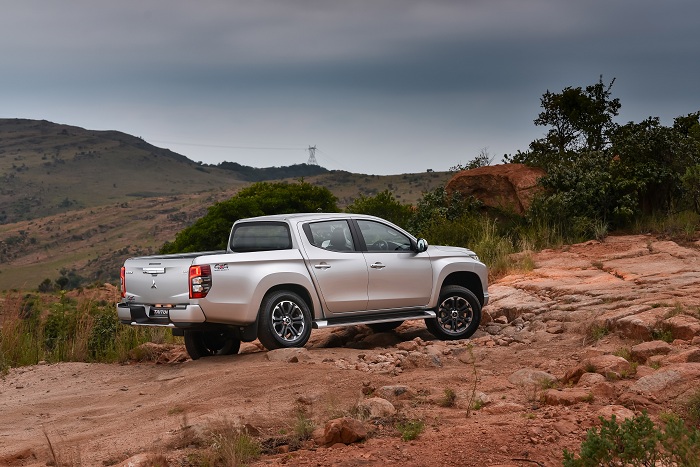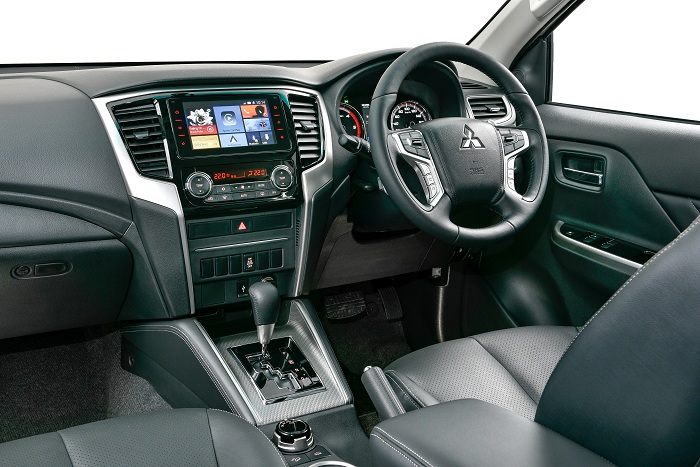Too wild to tame
Whereas the Colt had been seen as a worthy alternative to the Toyota Hilux, Isuzu KB (now D-Max) and even the Mazda Drifter-based Ford Ranger, the Triton fell miserably short of replicating its predecessor’s success, as buyers simply could not get to the grips with what Chief Designer, Akinori Nakanish, had created.
A similar story followed in 2014 where the more rounded fourth generation Triton only touched down on local soil in 2017, effectively placing it at a disadvantage right from the off as sales struggled to breach 50 units a month, resulting in it languishing at the bottom of the local bakkie segment.
Still fresh from its world debut in Bangkok towards the end of last year though, Mitsubishi has now officially made the heavily updated Triton available with not only a host of new features but also with changes underneath the skin and of course, with a new face.
Dynamically forceful
Although Mitsubishi’s Dynamic Shield styling language already takes centre stage on the Eclipse Cross and Outlander, the Triton arguably wears its iteration the best with the new, thinner headlights being offset by a smaller grille and a pronounced front bumper that endows it with an aggressive and macho look.

While the side-profile has subtly been tweaked by the inclusion of wider wheel arches, the often criticised rear facia has gone under the knife quite extensively in that it now comes with flatter panels on the load-bin, more conventional taillights and an integrated bumper.
It certainly is a radical departure from before and while fears are that it might go the same route as the previous generation, the local market’s wanting for beefier looking bakkies has finally played in the Triton’s favour as it now rates as one of the most eye-catching offerings on sale today.
Restrained interior differences
Inside, the changes are less prominent; however, the most noticeable is the new seven-inch touchscreen infotainment that comes as a welcome improvement over the old unit with its outdated graphics and laggy interface.

The same unit that does duty in the Eclipse Cross, the system boasts Apple CarPlay, Android Auto, Bluetooth and satellite navigation, though the latter proved somewhat disappointing as it froze on a number of occasions when in use in spite of the system being easy to use. More concerning though is the lack of rear passenger ventilation controls despite the presence of a second USB port, while headroom will not please taller folks by being merely average.
Same heart, more running ability
As mentioned, Mitsubishi has also been busy underneath the Triton’s exterior with the fitment of larger front and rear brake discs as well as callipers, bigger rear dampers filled with more fluid, and four new modes for the SuperSelect-II four-wheel drive system, Gravel, Sand, Mud/Snow and Rock, which allows for the shift from 2H to 4H to be carried-out below 100 km/h.
Unlike its new attire, the Triton’s heart has been not received an additional adrenalin shot, with the all-aluminium 2.4-litre DI-D turbodiesel motor still producing 133 kW and 430 N.m, but teamed to a brand-new six-speed automatic gearbox or the carryover six-speed manual.
Preferred over the eight-speed unit used in the Pajero Sport to avoid hunting when towing up to the rated 3 100 kg, the new ‘box, which comes as standard with paddle shifters lifted from the limited run Athlete model, proved to be a standout on the launch route around the Cradle of Humankind, as it was smooth and matched accordingly to an engine that continues to hold little back in the pulling department versus the bigger four-pots of its rivals.
Despite the updates the suspension, the ride failed to be as compliant as that of the pre-facelift Triton, though this could be as a result of the degrading road surface quality and badly patched sections that lined said route.
It was a different story off-road where a serious of obstacles didn’t deter the Triton much once the rotary dial had been switched to low-range. Boasting 220 mm of ground clearance, a rear diff-lock, break-over and departure angles of 25 and 23 degrees and Hill Descent Control, it made light work of the set-out course and felt easy to manoeuvre thanks to a decent feeling electric power steering setup.
Conclusion
Its penchant for being risky has, in this case, not come back to bite Mitsubishi as hard as before, as the updated Triton largely succeeds in improving on where its forerunner came up short.
As alluring as it appears on paper both externally, internally, mechanically and indeed on price by being considerably cheaper than its rivals, it remains to be seen whether enough has been done to tempt buyers back to the three diamonds, especially as it is now more capable than ever.
Warranty and service
All models come standard with a three-year/100 000 km warranty and a five-year/90 000 km service plan.
Pricing
2.4 DI-D D/C - R509 995
2.4 DI-D D/C AT - R529 995
2.4 DI-D D/C 4x4 - R569 995
2.4 DI-D D/C 4x4 AT - R589 995
















